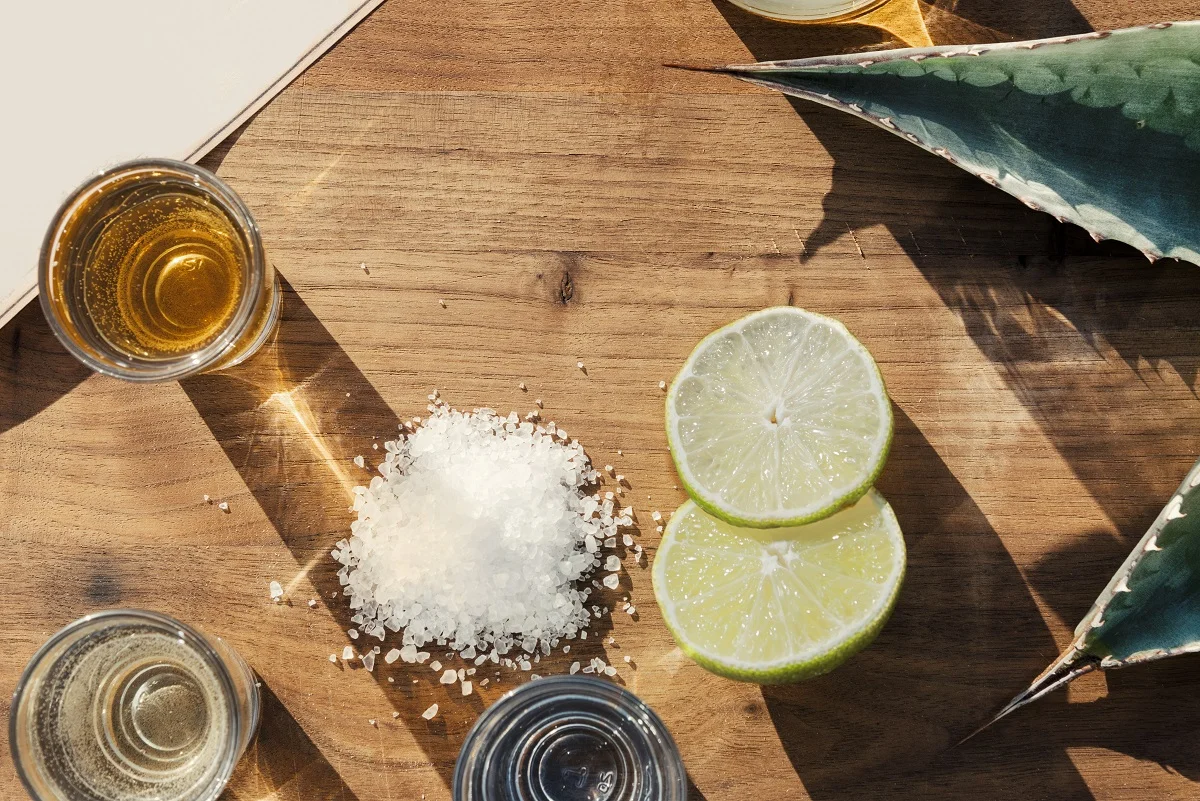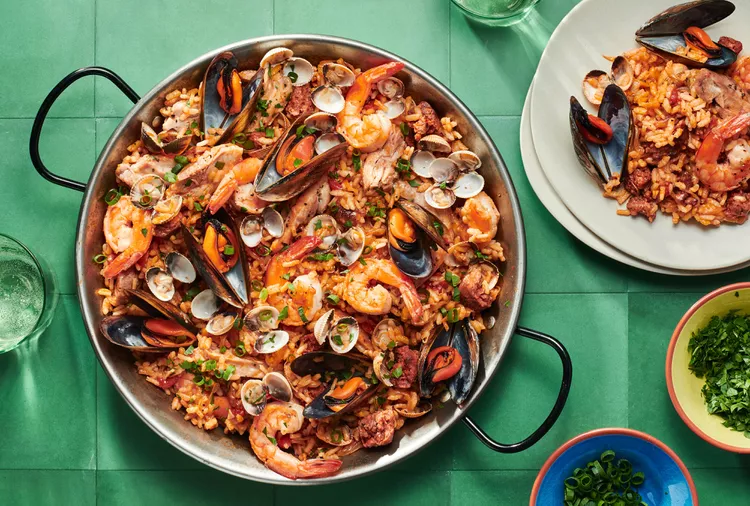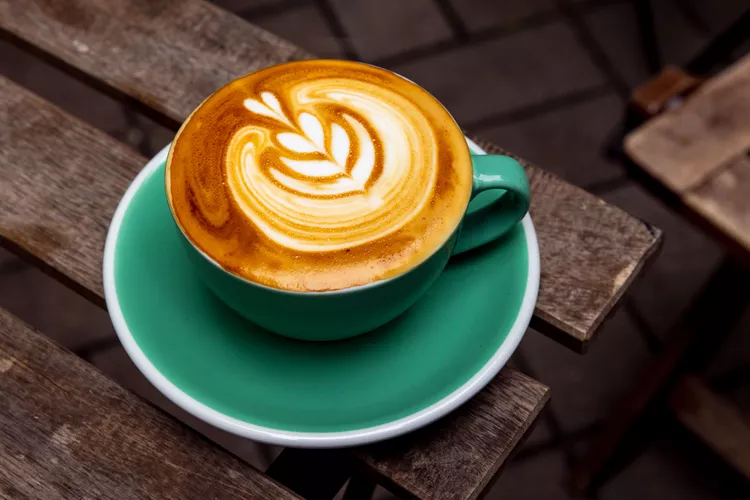
It’s not about the smoke.
Mezcal is smoky and tequila isn’t, end of story, right? Not exactly. Tequila and mezcal aren’t sister spirits; rather, tequila is an offshoot of mezcal, much like Cognac is a specific kind of French grape brandy. Though their modern production methods differ, all tequilas are technically mezcals, that is, a spirit distilled from fermented agave in one of the nine Mexican states legally allowed to describe their liquor as mezcal.
Historically, tequila was made just like any other mezcal: with agave hearts roasted in earthen ovens called hornos, then crushed, fermented, and distilled. This roast is what lends many mezcals their smoky flavor, and as demand for tequila skyrocketed, distillers ditched the inefficient pits for faster steam-pressure ovens that impart no extra flavor to the agave. However, some tequilas are still made the traditional way, horno and all. On the flipside, if you’ve avoided mezcal so far because you don’t care for smoke, keep in mind that certain mezcals bear little to no smoky flavors at all. It all comes down to how the distiller manages their oven.
The History of Tequila:
Introduction
Tequila, a distinctive Mexican spirit known for its unique flavor and cultural significance, has a rich history that spans centuries. From its ancient beginnings with the indigenous peoples of Mexico to its modern status as a globally celebrated beverage, tequila’s journey is a fascinating tale of tradition, innovation, and cultural pride.
Ancient Beginnings
The story of tequila begins long before the arrival of the Spanish in the Americas. The Aztecs and other indigenous groups in what is now central Mexico were the first to cultivate and use the agave plant. They made a fermented beverage called “pulque” from the sap of the agave, which was used in religious rituals and as a medicinal drink. Pulque was considered sacred and was reserved for special occasions and the elite class.
The Birth of Mezcal
The true precursor to modern tequila emerged with the arrival of the Spanish conquistadors in the early 16th century. The Spanish, seeking an alternative to their dwindling supplies of brandy, began experimenting with the agave plant. They introduced distillation techniques, which led to the creation of “mezcal,” a distilled spirit made from cooked agave. This early form of mezcal was the ancestor of tequila.
The Rise of Tequila
The transition from mezcal to tequila as we know it today occurred in the region surrounding the town of Tequila in the state of Jalisco. In the 17th century, the Spanish established the first large-scale distilleries in this area. The blue agave plant, specifically the “Agave tequilana Weber var. azul,” was found to produce the best flavor, and it became the standard for tequila production.
The Cuervo family is credited with being one of the first to commercially produce tequila. In 1795, José Antonio de Cuervo received the first license to commercially produce tequila from King Carlos IV of Spain. This marked the beginning of the commercial tequila industry.
Tequila’s Global Journey
Tequila gained popularity throughout Mexico in the 19th century and eventually caught the attention of international markets. The Mexican Revolution (1910-1920) played a significant role in spreading tequila’s fame. Revolutionary leaders like Pancho Villa were often depicted with bottles of tequila, which helped cement the spirit’s image as a symbol of Mexican identity and resilience.
The mid-20th century saw tequila’s global popularity soar, particularly in the United States. The rise of the margarita cocktail in the 1940s and 1950s further boosted tequila’s profile. American tourists visiting Mexico also contributed to its growing fame, bringing bottles of tequila back home and sharing it with friends and family.
Regulation and Quality Control
To protect the integrity and reputation of tequila, the Mexican government established regulations and quality standards. In 1974, the term “Tequila” was granted a Denomination of Origin status, meaning that only agave spirits produced in specific regions of Mexico could legally be called tequila. This helped ensure that tequila maintained its authenticity and quality.
Modern Tequila Industry
Today, tequila is a global phenomenon, enjoyed by people from all walks of life. The industry has expanded significantly, with numerous brands and varieties available. Tequila is typically categorized into several types, including Blanco (unaged), Reposado (aged between 2 months and a year), Añejo (aged between 1 and 3 years), and Extra Añejo (aged over 3 years). Each type offers a unique flavor profile, appealing to a wide range of palates.
In recent years, there has been a growing interest in artisanal and small-batch tequilas, emphasizing traditional production methods and high-quality ingredients. This movement has brought renewed appreciation for the craftsmanship and heritage behind each bottle of tequila.
The History of Mezcal:
Introduction
Mezcal, often regarded as tequila’s older, smokier sibling, is a Mexican spirit with deep cultural roots and a history that spans centuries. This distinctive beverage, made from the agave plant, has evolved from an ancient ritualistic drink to a celebrated global spirit. Understanding the history of mezcal provides a fascinating glimpse into Mexico’s rich heritage and the artistry behind its production.
Ancient Origins
The origins of mezcal can be traced back to pre-Hispanic times, long before the Spanish conquest of the Americas. Indigenous peoples of Mexico, including the Aztecs and Zapotecs, revered the agave plant for its versatility and spiritual significance. They fermented the sap of the agave to produce a milky, low-alcohol beverage known as “pulque.” Pulque was consumed during religious ceremonies and was believed to have medicinal properties.
The Introduction of Distillation
The arrival of the Spanish conquistadors in the early 16th century brought significant changes to the indigenous way of life, including the introduction of distillation techniques. The Spaniards, seeking alternatives to their dwindling supplies of brandy, began experimenting with agave fermentation. By applying distillation methods, they transformed the traditional pulque into a stronger, more potent spirit, which eventually became known as mezcal.
The Birth of Mezcal
The word “mezcal” is derived from the Nahuatl word “mexcalli,” which means “oven-cooked agave.” The production of mezcal involves roasting the heart of the agave plant, called the “piña,” in underground pits lined with hot stones. This cooking process imparts a distinctive smoky flavor to the spirit. After roasting, the piñas are crushed, fermented, and distilled to produce mezcal.
Mezcal’s Regional Diversity
Mezcal production is deeply intertwined with the geography and culture of Mexico. While tequila is primarily produced in the state of Jalisco, mezcal can be made in various regions, each contributing its own unique characteristics. The state of Oaxaca is particularly renowned for its mezcal, but other states, including Guerrero, Durango, San Luis Potosí, and Michoacán, also produce notable varieties.
The diversity of agave species used in mezcal production adds to its complexity. Unlike tequila, which is made exclusively from the blue agave plant, mezcal can be produced from a wide range of agave species, each imparting different flavors and aromas. Some popular varieties include Espadín, Tobalá, and Madrecuixe.
Cultural and Spiritual Significance
Mezcal has long held a special place in Mexican culture and spirituality. It is often referred to as “the elixir of the gods” and is used in various rituals and ceremonies. In many indigenous communities, mezcal is considered a sacred drink, believed to have healing properties and the ability to connect the physical and spiritual worlds.
Modernization and Global Recognition
In the 20th century, mezcal began to gain broader recognition beyond Mexico’s borders. The rise of craft spirits and the growing interest in artisanal products contributed to mezcal’s resurgence. Bartenders and mixologists around the world embraced mezcal for its unique flavor profile, incorporating it into innovative cocktails and reviving traditional recipes.
Regulation and Denomination of Origin
To protect the authenticity and quality of mezcal, the Mexican government established the Denomination of Origin for Mezcal in 1994. This designation ensures that mezcal production adheres to specific standards and can only occur in designated regions. The regulatory framework also promotes sustainable practices and the preservation of traditional methods.
Artisanal Renaissance
In recent years, there has been a renewed appreciation for artisanal and small-batch mezcals. Producers, known as “palenqueros,” often use traditional techniques passed down through generations. These methods emphasize hand-crafted processes, from harvesting wild agave to using natural fermentation and copper stills for distillation. This artisanal approach results in a wide range of flavors and a deeper connection to mezcal’s cultural heritage.

Public holidays | Dubai Holidays | 2025 - 2026

Modern Mediterranean Food in 30 Recipes

Public holidays | Dubai Holidays | 2025 - 2026
![The 5 Best Banks for a Savings Accounts in Dubai [2025 ]](https://dubaipartylife.com/wp-content/uploads/2024/11/The-5-Best-Banks-for-a-Savings-Accounts-in-Dubai-1024x681.jpg)
The 5 Best Banks for a Savings Accounts in Dubai [2025 ]



